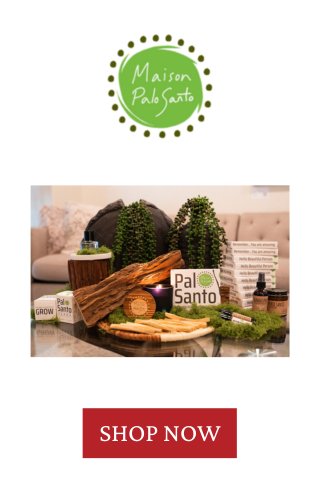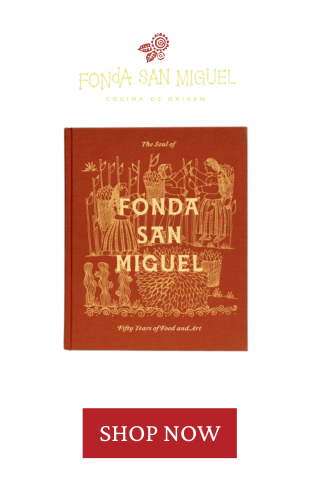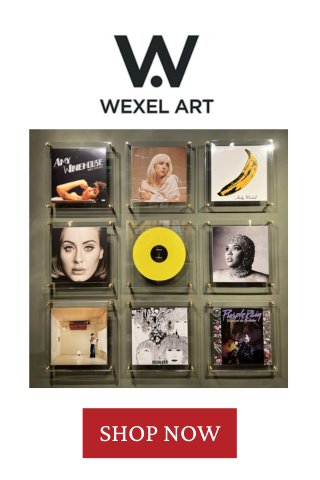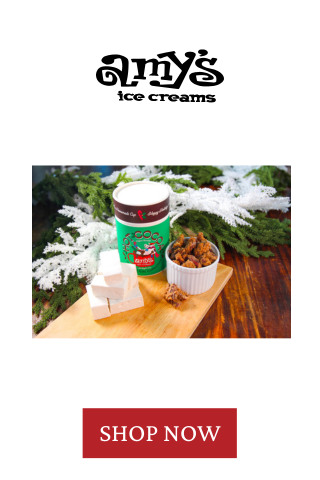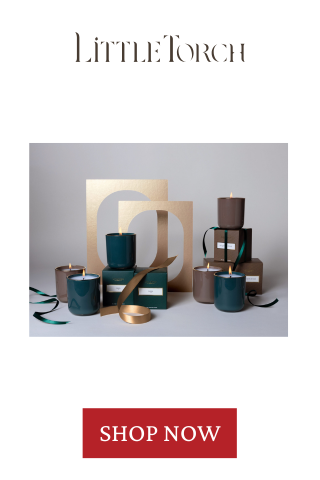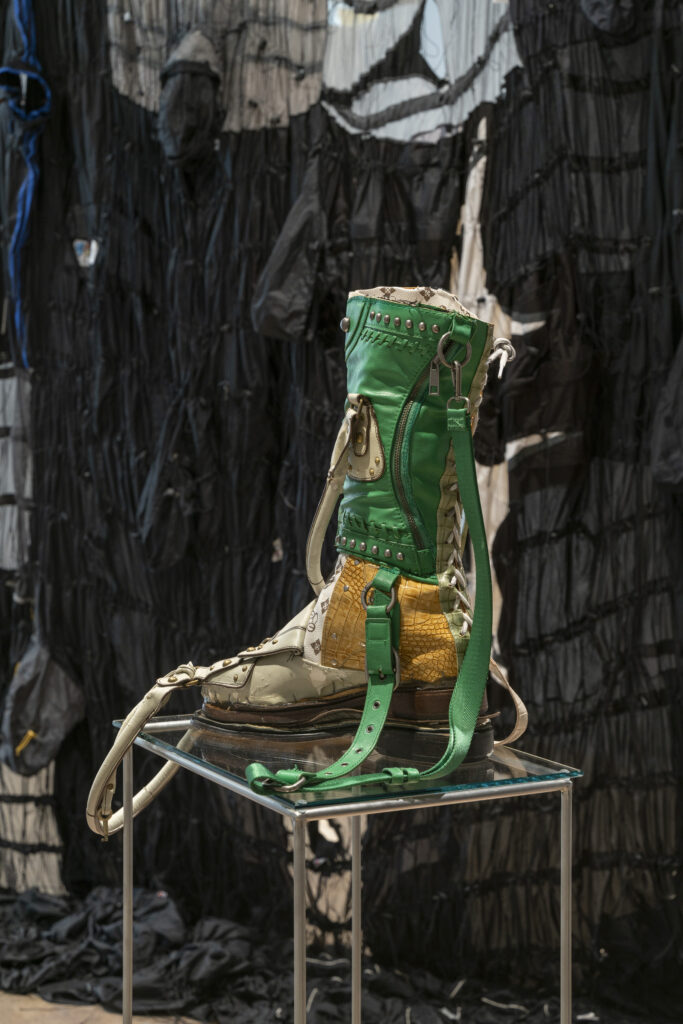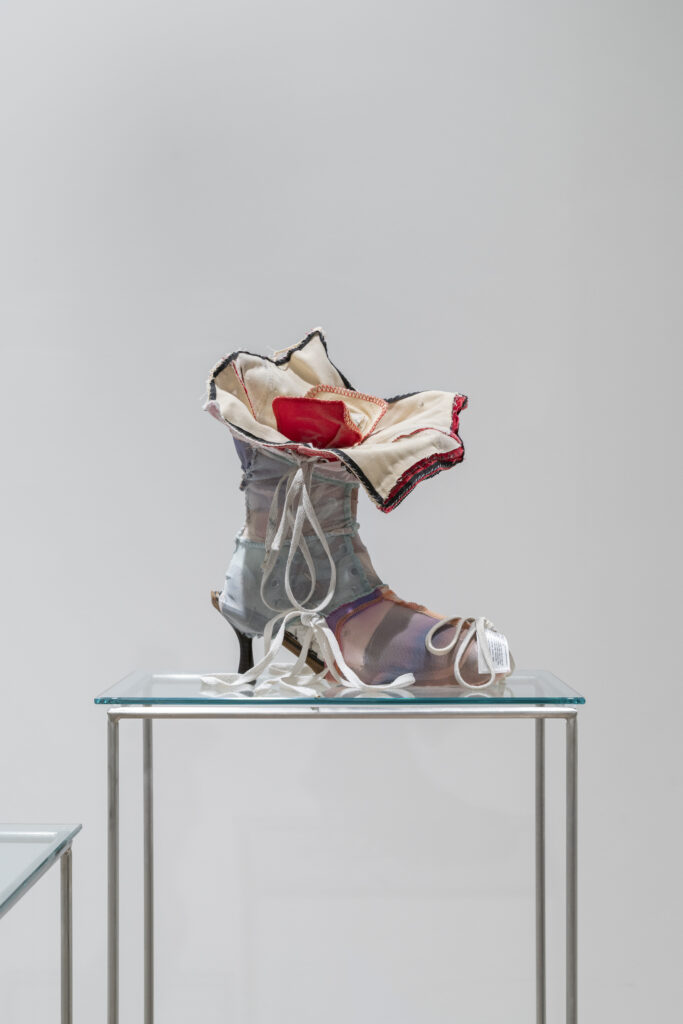The Contemporary Austin Explores Fashion, Waste and Sustainability in Jones Center Exhibit
Dutch artist Hendrickje Schimmel’s first U.S. museum exhibition transforms secondhand clothing into sculptural reflections on overproduction and sustainability
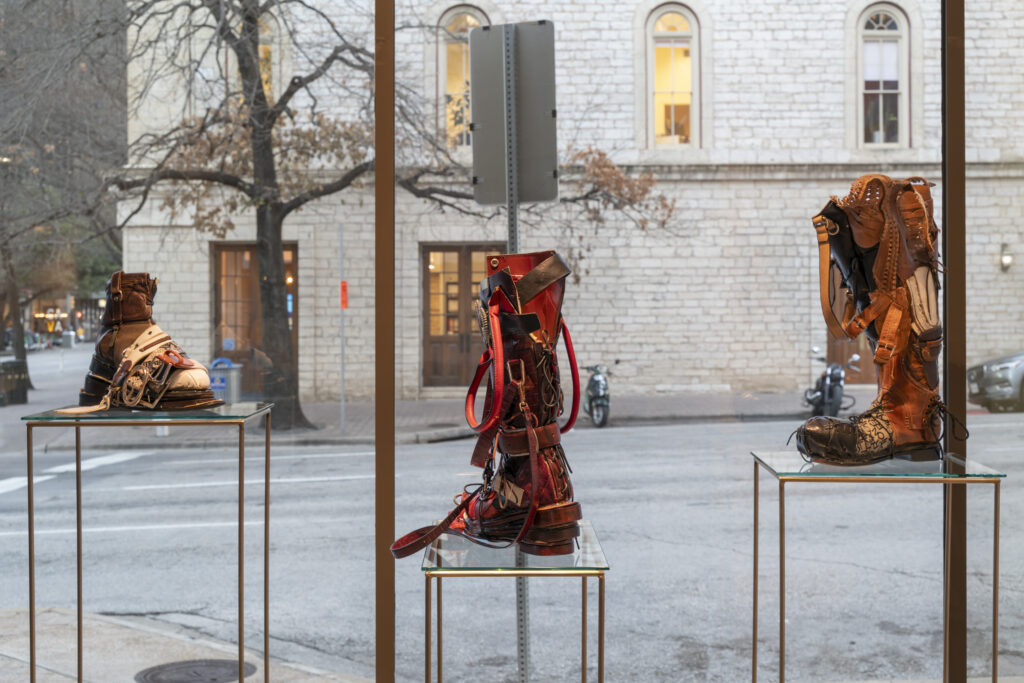
Step into the Jones Center, where art and fashion meet sustainability in an unexpected way in the exhibit entitled, “HOST: Tenant of Culture.” This is the first U.S. museum exhibition by artist Hendrickje Schimmel, who uses the moniker Tenant of Culture. A former fashion designer and textile expert from Arnhem, Netherlands, Schimmel uses her knowledge of the fashion industry to challenge how we think about clothes, consumption and waste.
“HOST: Tenant of Culture” is on view at The Contemporary Austin’s downtown outpost through Aug. 3 and serves as more than just an art exhibit — it offers a prompt for conversations about change, highlighting the speed and scale at which the fashion world produces new pieces, only to discard them just as quickly.
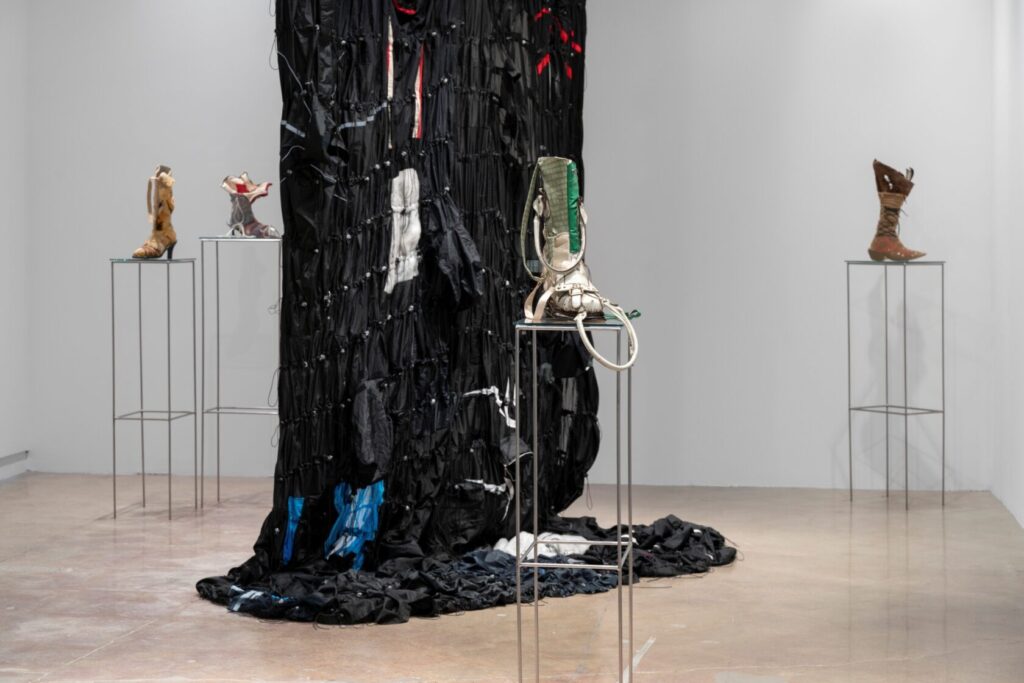
This exhibit, curated by Julie Le, includes six new works commissioned for the Austin museum. Le shared that she and Schimmel thought deeply about the presentation, giving an Austin context to global-scale issues. The works include the “Puzzlecut Boots (Series),” which features hand-stitched boot sculptures made of mixed leather and faux-leather materials, offering a nod to the history of leathercraft in Texas. This trade is now primarily outsourced overseas, along with many other manufacturing industries.
“Austin’s not a fashion center” notes Le, “but there’s a lot of interest in fashion, design, and sustainable business practices. There are many environmental initiatives tied to Austin’s ‘Zero-Waste by 2040’ goal, so that’s all kind of part and parcel of thinking about these larger questions around sustainability—but thinking about it with an artist who’s doing it formally and materially.”
Schimmel digs into secondhand clothing, deconstructing and reimagining these pieces into sculptural forms. By combining fragments of clothing from different times and places, she crafts something entirely new, challenging the disposable culture of the fast fashion industry.
RELATED: Where to Shop for Sustainable and Secondhand Fashion in Austin
“I think clothing is the tip of the iceberg of larger questions around consumerism,” says Le.
The exhibition takes you on a journey through contrasting spaces, starting with a quasi-boutique environment and continuing through suggested references of the hidden corners of the fashion industry, such as production factories and fulfillment centers. The boot sculptures are on view from the street, displayed much like a shop window, designed with a clever homage to the Jones Center’s origins – 1950s a department store.
On working together to design the show, Le shares that Schimmel is “always interested in the history and the place where her work is shown, so it was part of our conversations. The Jones Center’s history fit perfectly with her interest in playing with the language of fashion display in her exhibition designs, inviting us to engage it on a deeper level, and critically reflect on its lifecycle beyond the consumer level into the unseen histories embedded in our everyday clothing.”
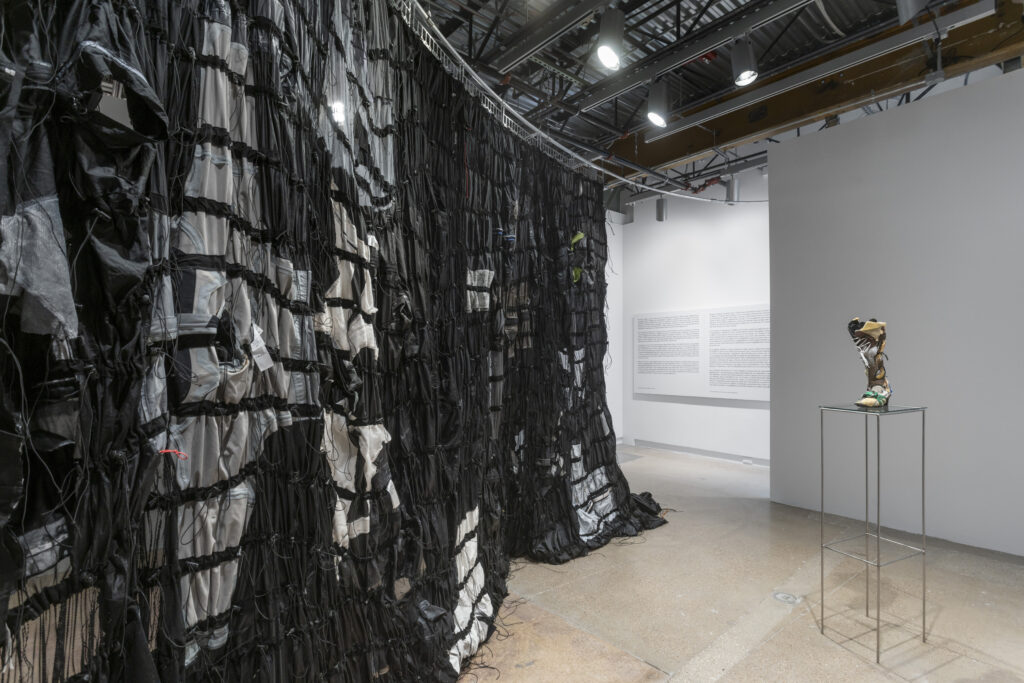
Weaving through the exhibit, museum visitors view a large-scale work hanging from tracks on the ceiling that features different sportswear materials sewed and tied together, part of the artist’s “Dry Fit (Series).” Notably, the chosen fabrics for this piece, such as waterproof materials, are among the most environmentally damaging. These fabrics include toxic pollutants that don’t naturally break down and pose significant risks to human health and the environment.
Schimmel’s artwork serves as a visual commentary on the fragmented nature of global fashion, where materials end up in landfills after a brief stint in our wardrobes. However, these discarded materials represent more than waste — they’re an opportunity. Through her creative reworking of secondhand garments, Schimmel envisions a sustainable, cyclical process in which materials are constantly reimagined and reused.
The exhibit sparks a powerful reflection on our commitment to sustainability, and it invites us to wonder what we can do with what we already have.
RELATED: Downtown Austin Becomes a Backdrop for Bold, Fashion-Forward Photo Series by Local Artist


